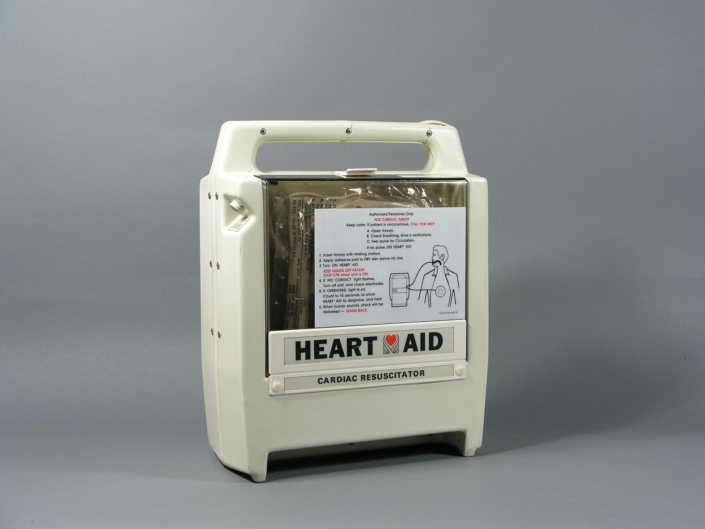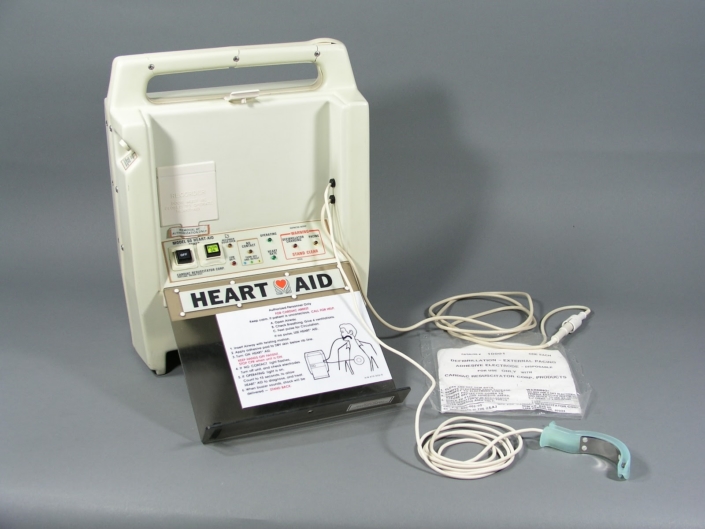Background
Since the first cardiac patient was saved utilizing electric defibrillation, a seemingly never ending chase has ensued to perform the life saving procedure faster and more accurately in order to cause the least amount of residual harm to the patient. In the early 1970’s Arch Diack, W. Stanley Welborn, and engineer Robert Rullman brainstormed ways to bring the defibrillator to the patient… and quickly! The concept was to develop a unit that bystanders could use in the event of an emergency, delivering potential lifesaving defibrillation and buy time for emergency personnel to respond to the scene. What resulted was the first Automatic External Defibrillator (AED) designed with the needs of a bystander operator in mind.
The Heart-Aid was produced by the Cardiac Resuscitator Corporation with the ABC protocol in mind. ABC approach to cardiac response was standard practice at the time and known to the public, if even only by the single words making up the abbreviation: “Airway” “Breathing” “Circulation”
Credit Line
National EMS Museum Collection (NEMSM-0234)
Memories
Share your memories of the Heart-Aid AED with us!
Shoot us an email at info @ emsmuseum.org or drop us a message on our Social Channels



